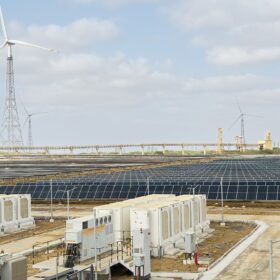The growing dependence on renewable energy (RE) makes it imperative to focus beyond generation by maximising the efficiency and longevity of renewable assets. Every piece of equipment, whether a wind turbine, solar panel, or storage system, undergoes a complete journey from its inception and development, through construction and in-service operations, right up to its decommissioning. This “womb-to-tomb” or life-cycle management approach ensures that RE assets consistently deliver optimal performance throughout their lifespan. Managing this full life-cycle efficiently is vital for maximising return on investment, influencing decarbonization and ensuring sustainability!
RE power plants, in particular, are akin to “production houses” of energy. Each energy generator contributes to a clearly defined target, delivering more megawatt-hours (MWh) of energy per megawatt (MW) of installed power at an optimum operating cost per unit generated. To achieve this, the sector needs a shift in perspective: moving away from measuring mere “Availability” of assets toward maximising “Operational Efficiency.” This requires leveraging emerging technologies that allow wind and solar assets to be monitored, analysed, and optimised remotely from centralized monitoring and control centers.
The backbone of this transformation lies in advanced data capture and analytics. By continuously collecting real-time performance data from turbines, operators monitor real-time energy output and also identify early signs of degradation and predict potential failures.
Modern wind turbines and solar plants generate large volumes of operational data. By leveraging analytics, inefficiencies can be identified, performance assessed in real-time, and emerging issues addressed before they escalate. A dynamic operations and maintenance (O&M) support system builds on this intelligence to provide a strong grip on performance levels while minimising downtime. When integrated with predictive tools, such systems ensure that each wind turbine individually or in multiples and/or in consonance with Solar PV or storage element contributes optimally to the farm’s total output, maximising energy production and strategizing offtake.
Another essential component is Reliability management. These tools are essential to prolong equipment life and minimise costs. Integrating AI, machine learning, and immersive technologies such as Virtual and Augmented Reality (VR/AR) can enhance fault detection, simulate complex scenarios, and provide hands-on training to technicians in a safe, cost-effective manner. These technologies also support a systems approach, balancing reliability requirements, cost considerations, and operational outcomes.
Equally important is the human factor. Highly trained maintenance staff are critical to interpreting data, implementing advanced maintenance protocols, and ensuring seamless operations. Alongside this, efficient and cost-effective inventory control ensures that spare parts and materials are available when needed, without unnecessary stockpiling or waste.
Leveraging historic performance data adds another dimension to asset life-cycle management. Insights gained from past failures, weather patterns, and operating conditions enable predictive strategies that address reliability degradation before it escalates. Service operations must build competencies in data mining, modelling, and interactive visualisation, which allow stakeholders to track patterns, simulate outcomes, and make informed decisions.
A structured Continuous Improvement Programme ensures that lessons learnt are systematically incorporated into future operations. This creates a feedback loop where processes evolve alongside technologies and market needs. Importantly, RE Asset Management must move beyond the classical “preventive maintenance” approach, which relies on fixed schedules, to embrace condition-based maintenance. This strategy ensures interventions are made precisely when required, based on real-time equipment conditions, thereby reducing costs while improving reliability and efficiency.
As the RE sector grows, adopting these tech-enabled maintenance strategies will be key to ensuring that RE assets deliver affordable, reliable, and sustainable energy making a carbon-free world!
The views and opinions expressed in this article are the author’s own, and do not necessarily reflect those held by pv magazine.
This content is protected by copyright and may not be reused. If you want to cooperate with us and would like to reuse some of our content, please contact: editors@pv-magazine.com.








By submitting this form you agree to pv magazine using your data for the purposes of publishing your comment.
Your personal data will only be disclosed or otherwise transmitted to third parties for the purposes of spam filtering or if this is necessary for technical maintenance of the website. Any other transfer to third parties will not take place unless this is justified on the basis of applicable data protection regulations or if pv magazine is legally obliged to do so.
You may revoke this consent at any time with effect for the future, in which case your personal data will be deleted immediately. Otherwise, your data will be deleted if pv magazine has processed your request or the purpose of data storage is fulfilled.
Further information on data privacy can be found in our Data Protection Policy.